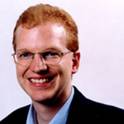Article
Performance of Coded Direct-Sequence Systems with Rake Reception in a Multipath Fading Environment
European Transactions on Telecommunications, Special Issue on Spread Spectrum Techniques
(1995)
Abstract
The probability of error of a coded coherent direct-sequence spread-spectrum system with rake reception operating in a specular multipath fading environment is examined. The model that is utilized contains a large number of paths divided into groups across the signalling interval. The rake is able to lock onto the direct path (delay 0) and one path from each of a subset of the other groups. For moderate to high signal-to-noise ratios, union bounds using the characteristic function of the interference are introduced to bound the error probability of the system when convolutional codes are employed. At low signal-to-noise ratios where the bounds do not converge, simulation results are presented. In each case, perfect interleaving of channel symbols is assumed so that codeword symbols are independent. The effects of the processing gain of the system and the number of branches in the rake receiver on the probability of error are explored
Disciplines
Publication Date
January, 1995
Citation Information
Dennis Goeckel. "Performance of Coded Direct-Sequence Systems with Rake Reception in a Multipath Fading Environment" European Transactions on Telecommunications, Special Issue on Spread Spectrum Techniques Vol. 6 (1995) Available at: http://works.bepress.com/dennis_goeckel/29/
